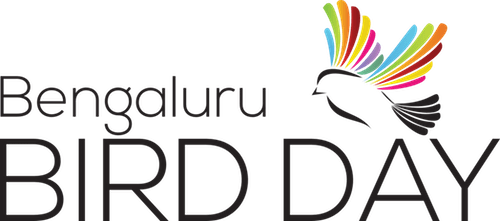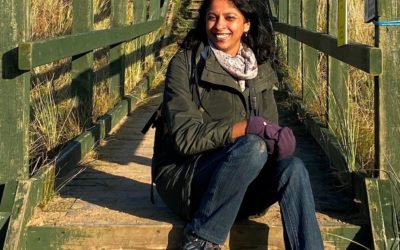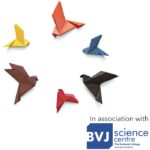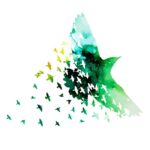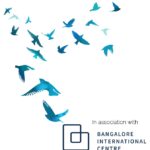
We are celebrating women and their contribution to nature studies and environment conservation.
Join us for this year’s Bengaluru Bird Day.
October 6, 2018
9 am to 7:30 pm
@ Xavier Hall, St. Joseph’s College, Langford Road.
Entry Free!
In association with
Seasons Nature Club
Department of Environmental Science
St. Joseph’s College, Bangalore.
St. Joseph's College
Dr. Joseph George Memorial Talk
Understanding species, populations and individuals through a genetic lens
Dr. Uma Ramakrishnan
About Dr. Joseph George
 If there is any one person who could be called the pioneer of group birdwatching efforts in India, it is Dr. Joseph George. Being involved with group birdwatching activities in Dehradun even in the nineteen forties, he continued involving people and popularising the hobby wherever he went. Moving into Bangalore from Roorkee, Dr. George started an informal bird watching group here too in Bangalore in 1972.
If there is any one person who could be called the pioneer of group birdwatching efforts in India, it is Dr. Joseph George. Being involved with group birdwatching activities in Dehradun even in the nineteen forties, he continued involving people and popularising the hobby wherever he went. Moving into Bangalore from Roorkee, Dr. George started an informal bird watching group here too in Bangalore in 1972.
For all of us birdwatchers who came in contact with him, he inspired us with his knowledge and humility, and had a way of making people learn about birds. He encouraged us to make our own observations, always emphasising that contributions to our knowledge of birds could be done by anyone and not just scientists. Though an organic chemist himself, he had many research papers on birds to his credit and encouraged us to publish as well.
Starting his career during the British times at the Forest Research Institute, Dehradun, he went on to become the Assistant Director of the Buildings Research Institute in Roorkee, and then the Director at the Indian Plywood Industries Research and Training Institute, Bangalore. He was an adhesive specialist par excellence, with a special interest in wood substitutes. And to this end he worked hard and achieved one technological innovation after another and derived more for nature conservation than what most of us only dream of. He had many patents to his credit and a few more coming. Even at ninety, he used to go every day to his laboratory, and also actively involve himself in gardening, which he was a great enthusiast of.
He has left a legacy for Bangalore that has at least a thousand times more birdwatchers than he started out with. And a publication ethic that amateurs could contribute to science too!
Speakers
Garima Bhatia
Garima Bhatia is a chemical engineer by training and birdwatcher by passion. At some point the passion overtook the training, and after spending ten years in automotive research, she decided she had enough of the corporate rat race and joined an NGO called Nature...
Abhisheka K
Abhisheka is an Artist, Ecologist and Nature educator. Growing up in the garden city of Bangalore and spending vacations at her grandparents’ place in the Western Ghats of Karnataka naturally helped Abhisheka develop a deep interest in nature. Love for animals and the...
Dr. Aparajita Datta
Aparajita leads NCF’s Eastern Himalaya programme, under which research and community-based conservation with hornbills as a flagship have been carried out for 20 years. She completed her PhD on hornbill biology and their role in seed dispersal in 2000. For the last 18...
Ovee Thorat
I am a PhD student at Ashoka Trust for Research in Ecology and the Environment. I use an interdisciplinary approach to study landscape change in arid and semi-arid grasslands in India. My PhD research involves understanding how development interventions in Banni have...
Usha Rajagopalan
Usha Rajagopalan is a writer by choice and conservationist by chance from Bengaluru. She led a campaign to save Puttenahalli Puttakere and ended up nurturing it through a registered non-profit trust, PNLIT. Directly or indirectly, the lake became a model for others in...
Nirupa Rao
Nirupa Rao is a botanical illustrator based in Bangalore, India. Her illustrations are inspired by regular field visits into the wild, and are informed by close collaboration with botanists to achieve scientific accuracy. In 2017 she was named a National Geographic...
Dr. Jainy Kuriakose
“I like to see the color of every feather of the bird and see the splendor of its plumage on the screen”: it is this relentless passion which drives Dr. Jainy Kuriakose to all corners of the Indian subcontinent, and across many foreign lands to photograph this...
Talks
Schedule
7:00 am
Birdwatching at Lalbagh Botanical Gardens, we meet in front of the Glass House opposite the band stand.
8:45 am
Tea
9:00 am
Introduction to Bengaluru Bird Day 2018
9:15 am
Ovee Thorat:
From the largest larks to the hyped Hypocolius – A myth-busting journey into the grasslands of Kachchh
10:15 am
Dr. Jainy Kuriakose:
Palette of plumes: the avian world through my lens
(Talk abstract awaited)
